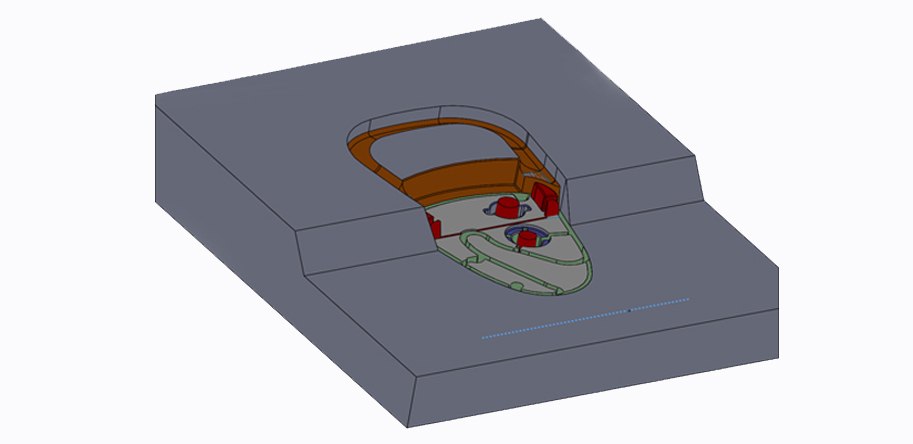Graphite Permanent Mold
Graphite Permanent Mold Casting
It’s your job to solve the puzzle, effectively, efficiently and economically. This means delivering a solution addressing a substantial array of new and emerging challenges from accommodating different design considerations to meeting rigorous standards and methods. Time is money and the timeframe between design and production is the most critical to your success.
At Albco Foundry, we provide a superior alternative to traditional casting techniques by utilizing graphite permanent mold technology (GPMT) to produce net and near shape parts in ZA-12 zinc-aluminum alloy. In fact, we were one of the original foundries in the United States to break the mold and couple ZA-12 with graphite permanent mold castings. This approach to graphite mold casting offers significant benefits including faster turnaround, precision quality and lower total costs.
Introducing ZA-12
First introduced for gravity casting, the ZA-12 zinc-aluminum alloy demonstrates superior strength and hardness, and displays good wear resistant properties in comparison to other non-ferrous alloys. Plus, ZA-12 is non-sparking, meaning your parts can be utilized in the most hazardous conditions, including underground. The accuracy and exceptional surface finish of parts casted in graphite molds virtually eliminate additional finishing steps with other casting techniques such as sand casting and die casting.
Graphite Mold Casting
Traditional methods for producing high tolerance cast parts can require complicated processes or expensive tooling and equipment. Albco has the in-house capabilities to produce exceptional quality and consistent graphite permanent mold tooling while saving you as much as 75% on tooling costs. A single mold can produce up to 25,000 castings. Albco stands by the strength and stability of our parts that if in the event they were to deteriorate, we will replace your components free of charge.

Graphite Permanent Mold Casting Process
Graphite mold casting has become the preferred choice in industrial applications for its flexibility. It can be applied to a wide range of quantities while delivering close tolerances for the most complex parts.
The graphite permanent mold casting process begins with pneumatically clamping two graphite blocks in a press. Molten metal is poured into a sprue or pouring basin at the top of the mold. Once the metal has solidified, the graphite molds are separated and the castings are removed.
We collaborate with you each step of the way from concept and design to casting and refining, it’s our commitment to deliver the exact part you need.
Integrated Product Development
We provide the blueprint to create tooling and fixtures by utilizing state-of-the-art SolidWorks and Mastercam software. All elements of your part are evaluated. We consider the functionality, gating, secondary operations and ejector pin locations. Collaboration and concurrent engineering are key to developing your product.
Metal Meets The Mold
Once your tooling is completed, molten metal is quietly introduced into the new mold cavity that is mounted in our proprietary semi-automatic molding machines. We then run samples for validation and provide a pre-production inspection report for your approval. Once approved, expect two to four weeks for production to begin.
Rapid Production
Utilizing our premier manufacturing technologies and capabilities, we can rapidly produce your parts faster than ever. Provided you have files ready to go, graphite permanent mold cast tooling can be ready to go within five business days. Keep in mind the standard design cycle takes about three weeks to complete.
Advantages of Graphite Permanent Molding
Graphite permanent mold casting has become a fundamental component of the foundry. Due to its superior flexibility and adaptability, graphite permanent mold can be effectively applied over a wide range of quantities and produce simple to complex parts with dense tolerances. Quality is achieved through the dimensional stability of the mold material offering near net shape repeatability.
Substantially lower pricing per part
Low tooling costs half of other casting
Short lead times with our CAD/CAM software and 3D model capabilities
Greatly reduce secondary machining operations
Higher degree of dimensional accuracy and tolerances
Bearing qualities eliminate the need for pressed in bushings
Piece-to-piece repeatability and cast surface finish of 125 RMS or better
Our Work
We can cast ZA-8 and ZA-12 with graphite permanent mold ranging from ounces upwards of 15 pounds. Sizes can be tailored to 10 inches wide, 15 inches long and as deep as four inches.
Let’s Talk
Cast, forged, stamped or fabricated: There are many factors, such as material selection, mechanical and physical properties, required finish, ease and speed of production, availability and cost, to consider to creating the component you need. This includes understanding the characteristics of the preferred process, tolerance range, production quantity, repeatability, tooling costs and final component costs. In fact, the total acquisition cost over a period of three to five years for graphite permanent mold compared to other processes is much more economical, improving your bottom line.
Explore how graphite permanent mold casting can meet your manufacturing needs.
